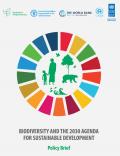
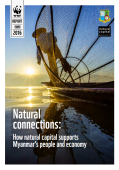
Myanmar’s natural assets – including its forests, soils and coastal waters and the biodiversity they embody – makes up its natural capital, providing critical benefits to the Myanmar people.
Benefits are helping to protect them against natural hazards and ensuring reliable sources of clean water for drinking and irrigation as well as opportunities for ecotourism. The assessment presented in this report shows where and how Myanmar’s natural capital contributes to clean and reliable drinking water sources, reduced risks from floods inland and storms along the coasts, and to maintaining the functioning of reservoirs and dams by preventing erosion. The results highlight areas that provide high levels of ecosystem services, where natural capital provides the greatest benefits to people and infrastructure. The natural capital assessment provided here can support development and management decisions that launch Myanmar on a more sustainable and inclusive path toward economic development.
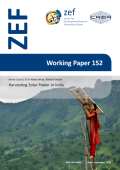
Prime Minister Narendra Modi has set an ambitious target of 100,000 MW of solar power capacity to be achieved by 2022, when India celebrates 75 years of her independence. This is a grand vision for ushering in a sort of revolution in clean energy in India in the next six years. In a country that generates more than 60 percent of its power by burning coal, and where air quality is fast worsening in several Indian cities, the need for clean energy cannot be overstated. Interestingly, Prime Minister Modi has also set another ambitious target of doubling farmers'
incomes by 2022!
The uppermost question in everyone's mind is: can these targets be achieved by 2022? This is particularly so when the current solar power capacity in the country has just touched 8000 MW by July end, 2016, and no country in the world has such an ambitious target as India has set out for 2022. On farmers' real incomes, the compound annual growth rate (CAGR) in the recent past (FY2003 to FY 2013) has been mere 3.5 percent; and doubling these incomes by 2022 would mean increasing this CAGR from 3.5 percent to more than 12 percent.
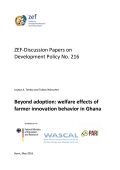
With numerous challenges hindering smallholders’ adoption of externally developed technologies, it is often argued that farmer innovation can play an essential role in rural livelihoods. Yet a rigorous assessment of the impact of farmer innovation is lacking. We address this issue by analysing the effect of farmer innovation on household welfare, measured by income, consumption expenditure, and food security. Using household survey data from northern Ghana and applying endogenous switching regression, we find that farmer innovation significantly increases household income and consumption expenditure for innovators. It also contributes significantly to the reduction of food insecurity among innovative households by increasing household food consumption expenditure, decreasing the duration of food shortage, and reducing the severity of hunger. However, we find that the positive productivity and income effects of farmer innovation do not significantly translate into nutritious diet, measured by household dietary diversity.
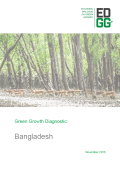
This report seeks to generate evidence on the binding constraints to shifting Bangladesh’s current economic strategy to one aiming at green growth. Specifically, it is critical that Bangladesh decouples its economy from the negative environmental effects of the economic growth path it is currently pursuing. It is important that green growth is pursued in order to unlock Bangladesh from its unsustainable growth path to a more sustainable and inclusive one.
This paper uses a novel approach which has not been trialled elsewhere- the Green Growth Diagnostic. This methodology will help Bangladesh develop its strategy to pursue an economic growth path that takes full account of natural resources and promotes sustainable development. This report will demonstrate and highlight the constraints that need to be addressed in order to do so.
